The role of a journalist has evolved at a rapid pace in the last 15 years. Driven by the shift to online news consumption and the rise of new platforms, today’s reporters face obstacles their predecessors never experienced.
Cision has been charting this journey since 2009, when our State of the Media Report began as a joint study with George Washington University to track how journalists were using a cutting-edge technology called “social media.”
A lot has changed since then. In 2009, just 56% of journalists said social media was “important” or “somewhat important” for reporting and producing stories. Today, according to the 2024 State of the Media Report, 97% of journalists are using social media for a variety of work-related purposes – from promoting stories to newsgathering.
For PR and comms professionals, understanding the current media landscape and the challenges journalists face can better position them to build relationships and get their brands' stories shared.
What else does this year’s State of the Media tell us about journalism in 2024? We surveyed more than 3,000 reporters to find out the obstacles imposed by factors such as changing audience behaviors, industry downsizing, and the rapid growth of artificial intelligence.
We encourage you to download the full State of the Media Report, but if you’re short on time we’ve summarized some of the findings to show what’s on journalists’ minds right now.
1. Downsizing Is Journalists’ Biggest Worry
The last year saw substantial news and media layoffs in the U.S. According to FastCompany, more than 21,000 media jobs were lost in 2023 – the highest (excluding 2020) since 2009, when more than 22,300 jobs were cut, and 2008, when 28,800 jobs were cut.
With that in mind, it’s no surprise that the 2024 State of the Media saw 60% of journalists flag media downsizing and reduced resources as their biggest personal challenge over the last 12 months. This was above “balancing reporting on important topics against pressure to drive business” (cited by 42%) and “having to compete with misinformation online” (33%).
In a year that has seen the emergence of artificial intelligence tools like ChatGPT and Gemini, 1 in 4 journalists named AI as a challenge to journalism. However, nearly half revealed they are leveraging the technology in various ways – 23% are using it for research, while 19% utilize it to help create outlines or early drafts of content.
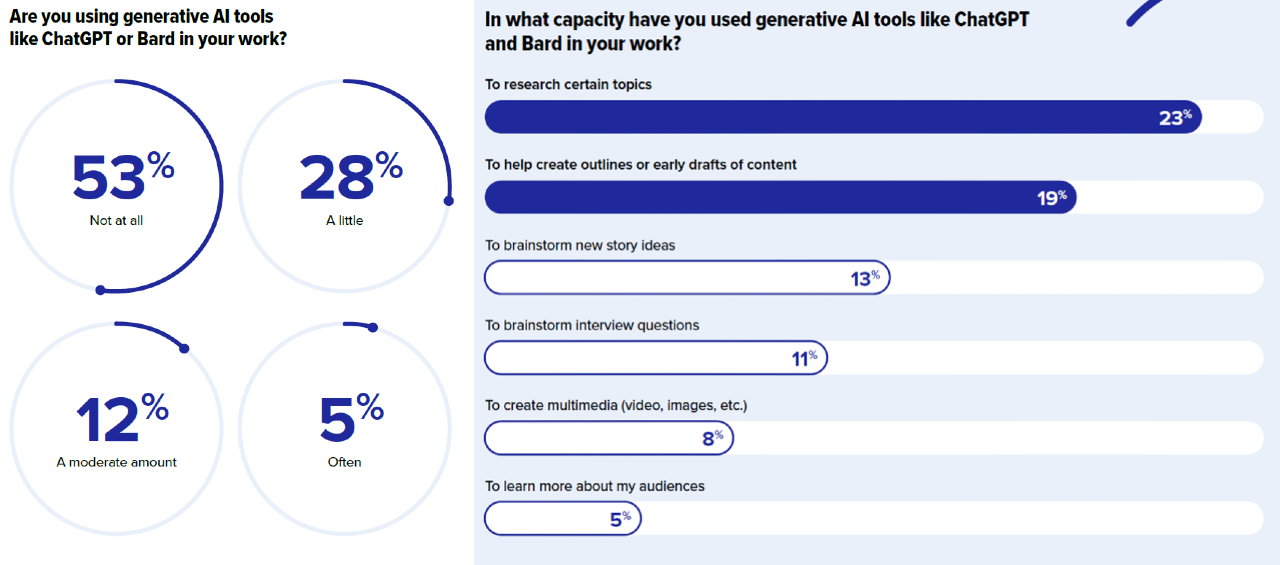
2. Journalists Face Pressure to Deliver Audience Numbers
Newspaper and magazine circulation figures have always been viewed as benchmarks for media success. Yet with today’s advanced digital analytics tools, journalists’ work can be tracked and analyzed from the moment it’s published.
This intel can be useful for understanding how to build successful content, but also brings a level of scrutiny when it comes to content and traffic performance. It’s an area where journalists are feeling pressure, too.
When asked to name their organization’s primary measure of success, 79% said readership/viewership numbers. That’s some way ahead of the 47% who said engagement (internal link traffic generated, newsletter sign-up, social interactions, time spent on page, etc.) and 33% citing content that had a direct link to revenue (e.g. subscriptions or advertising).
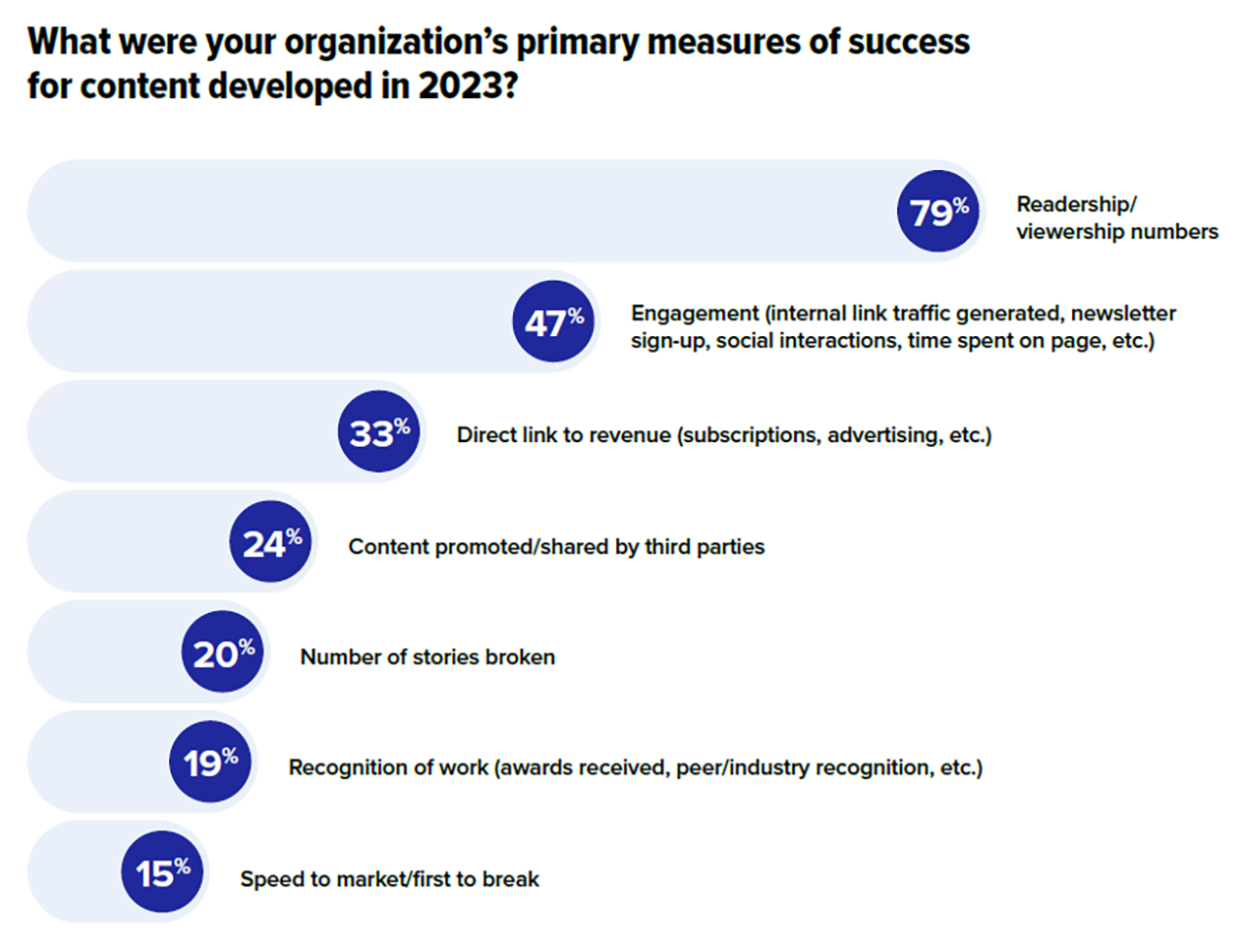
For PR professionals, these findings demonstrate the importance of offering journalists content that has the potential to resonate with their audiences.
The story of these pressure points is slightly different when comparing staff journalists and those who are freelance or independent. In this year’s State of the Media, we broke down the responses from journalists who identified themselves by employment type – and although readership and engagement occupied the top two spots for both cohorts, freelancers placed more value in their content being promoted or shared by third parties (27% of freelancers vs. 23% of staff).
This highlights how freelancers are keen to build their own personal brands and are looking for ways to amplify their stories beyond the publication or platform that runs their story.
3. Journalists Are Getting to Grips With Data
With pressure to deliver content that builds audiences and engagement, it’s no surprise to see that data is playing an even larger role in how journalists approach their work.
Nearly 2 in 5 journalists (37%) said they will be using data more to inform their editorial strategies this year, indicating that audience metrics are increasingly shaping editorial decisions.
Though data can give valuable insight into what stories gain traction and who’s reading them, many journalists are struggling with prioritizing content deemed “popular” solely by its views and engagement. As one respondent noted, “So much of journalism has become about ‘clicks’ and ‘shares,’ and those often seem to take precedence over keeping the public informed.”
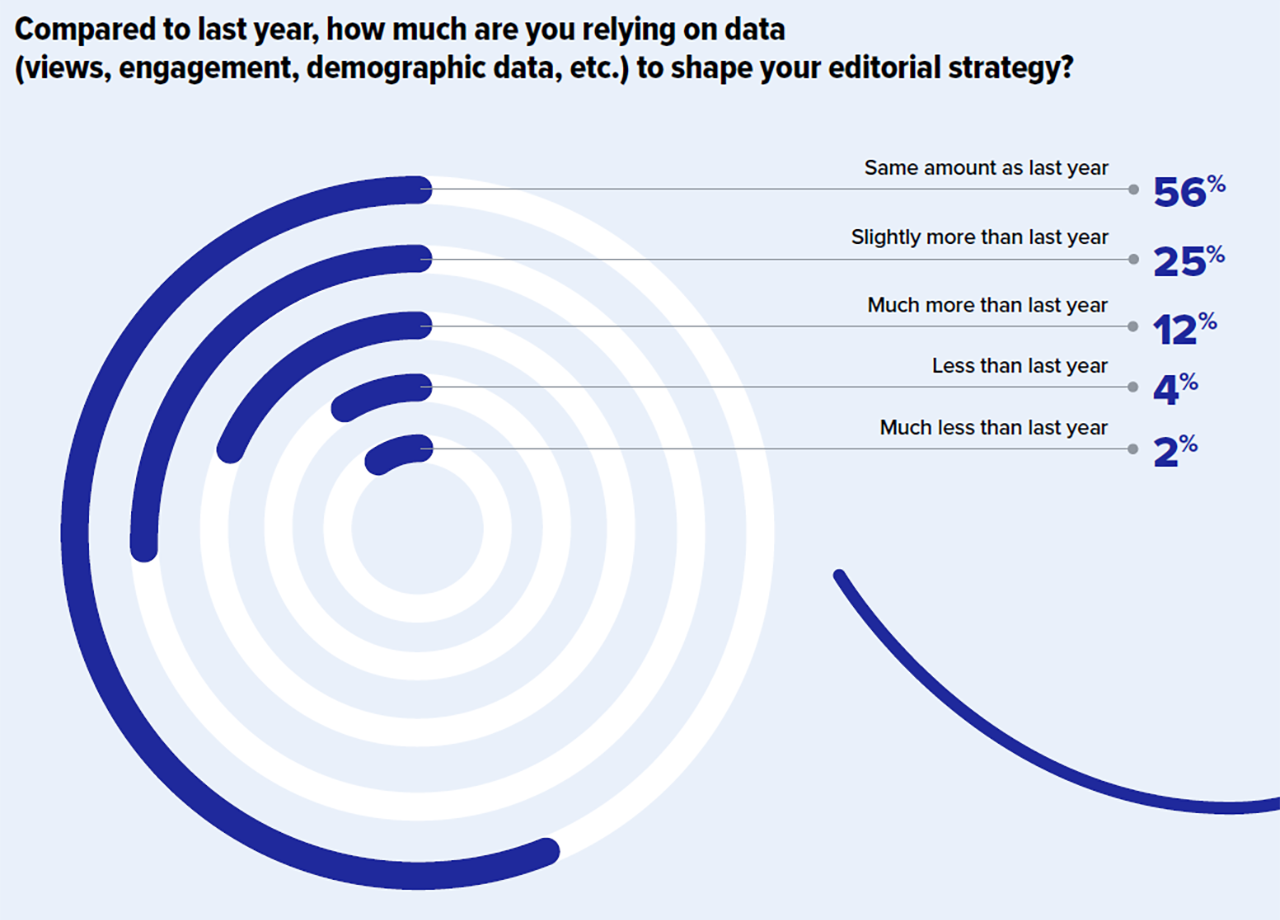
There is a notable difference in how journalists in APAC are using data compared to the survey’s global numbers. More than half (58%) said they are using it more compared to last year, indicating that reporters in the region (we surveyed in China, Australia, Singapore, Malaysia, Indonesia, Taiwan, and Hong Kong) are further along in their data journeys than the rest of the world.
4. Credibility, Trust, and Fighting Fake News Are Front of Mind
If downsizing is journalists’ biggest concern on an individual level, what are their wider worries for the industry and profession as a whole?
When asked what they believed were the biggest challenges for journalism in the last 12 months, 42% said “maintaining credibility as a trusted news source/combating accusations of ‘fake news’.” Both journalists and PR professionals have common ground here, with the latter acutely aware of how a brand can be undone by misinformation and the erosion of trust.
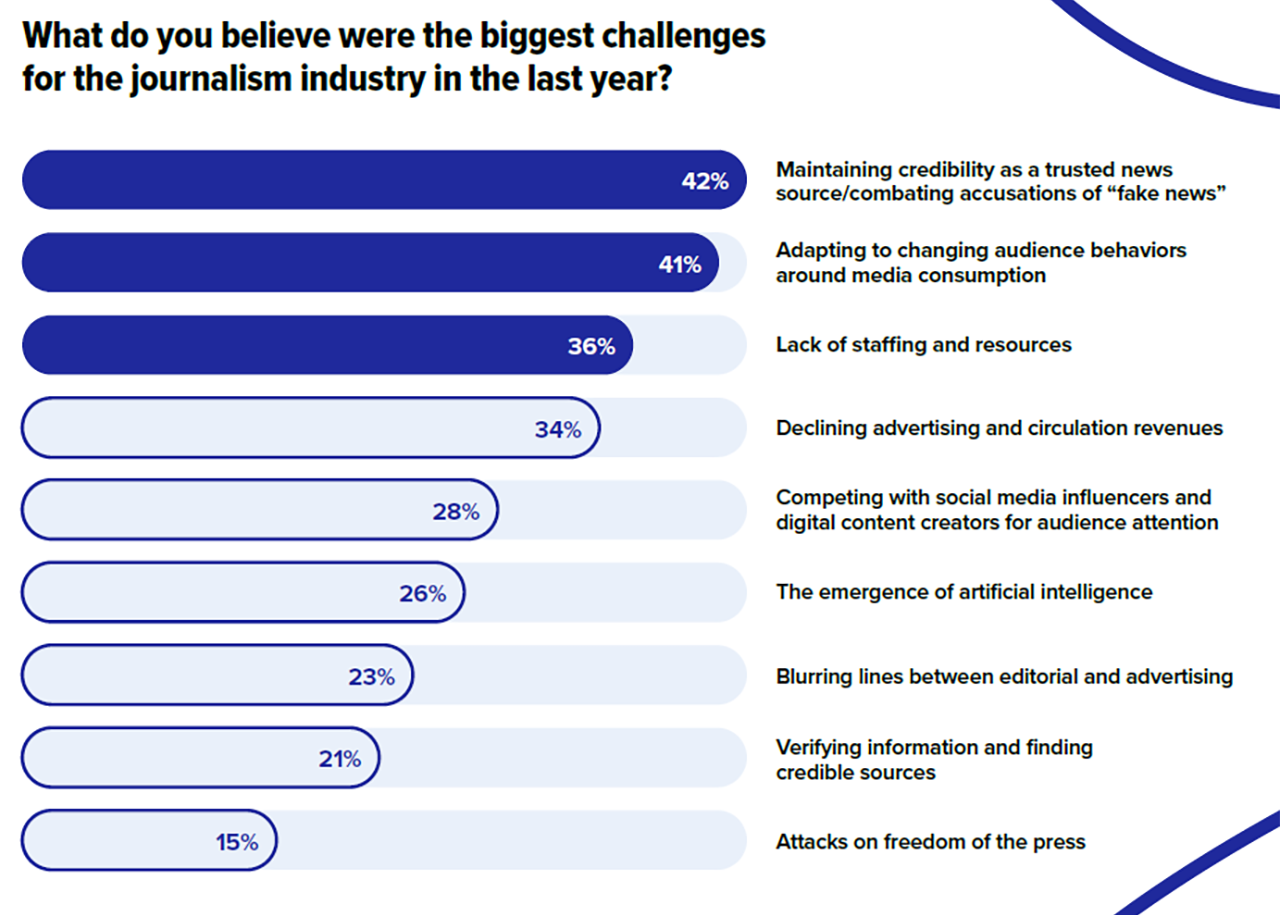
One statistic of note: though 28% of journalists globally see the rise of social media influencers and digital content creators as a challenge, this number is much higher in the APAC region at 39% (for comparison, 27% of EMEA and 24% of North America journalists named it as a challenge).
The prominence of social media leads into another challenge that’s on the mind of journalists...
5. Journalists Need to Adapt to Audiences’ Changing Behaviors
Close behind the concern about credibility, trust and fake news, is a worry about audiences’ changing behaviors around media consumption. More than 2 in 5 (41%) of journalists named this as one of the biggest challenges for journalism in the last 12 months.
This finding indicates that journalists are struggling to keep up with changes in the way audiences get their news and information. Social media, and creators who are native to these platforms, offer fresh ways for people to consume content – and the speed with which they can disseminate information can outpace traditional media outlets.
When asked which social media platforms their brands planned to be more active on, the most popular response was Instagram (named by 44%, ahead of LinkedIn and Facebook).
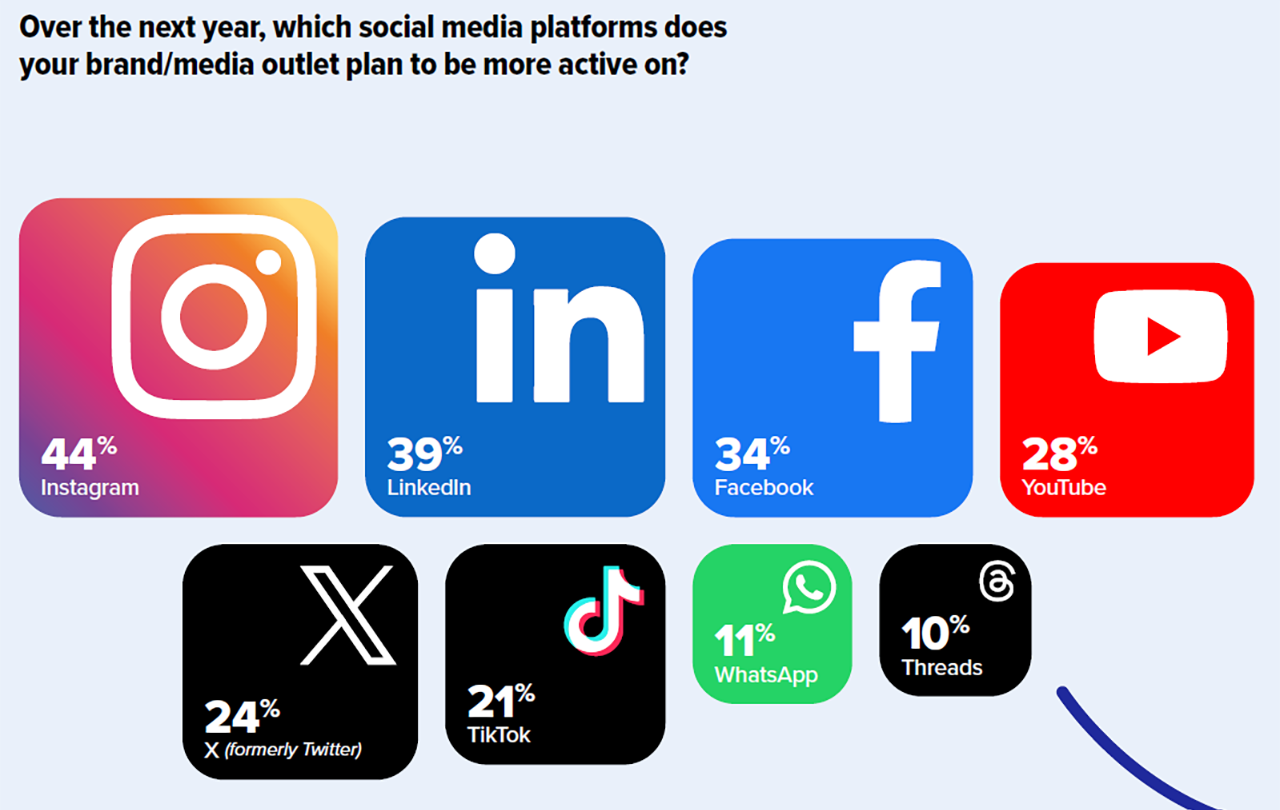
This finding suggests that journalists, who traditionally deal with words, are starting to gravitate toward more visual storytelling. This underscores the importance of understanding the different types of content brands and journalists use on their social media platforms before making it part of their pitch. For instance, is there a useful chart or infographic for a story that could be repurposed on Instagram? Or is their story more suited to a longer-form thought leadership approach on LinkedIn?
The Bottom Line
These challenges are only the start of this year's State of the Media Report. One thing we’ve learned over 15 years is that journalists and PR professionals are increasingly operating in a fast-moving environment, both in terms of news and emerging technologies that impacts their day-to-day work.
They depend on each other to perform their jobs effectively, and it’s evident that many of these journalistic concerns are the same for PR professionals. Data from resources like the State of the Media can help highlight these pain paints and demonstrate opportunities for PR professionals and the journalists to work together to produce trusted, credible content that their audiences will find value in.
For more findings and takeaways that will enhance your relationships with journalists, download the full 2024 State of the Media Report.
Find out how Cision can help you connect you with the right journalists and influencers to share your stories, speak with one of our experts.
Most Recent Posts
Cision Resources
-
E-books and Guides
Comprehensive how-to guides on strategy and tactics
-
Case Studies
What are other brands doing – and how can we learn from them?
About Simon Reynolds
Simon is the Senior Content Marketing Manager at Cision. He worked as a journalist for more than a decade, writing on staff and freelance for Hearst, Dennis, Future and Autovia titles before joining Cision in 2022.
Learn More. Do More. demo new
PR Tips, Case Studies, and Product Updates
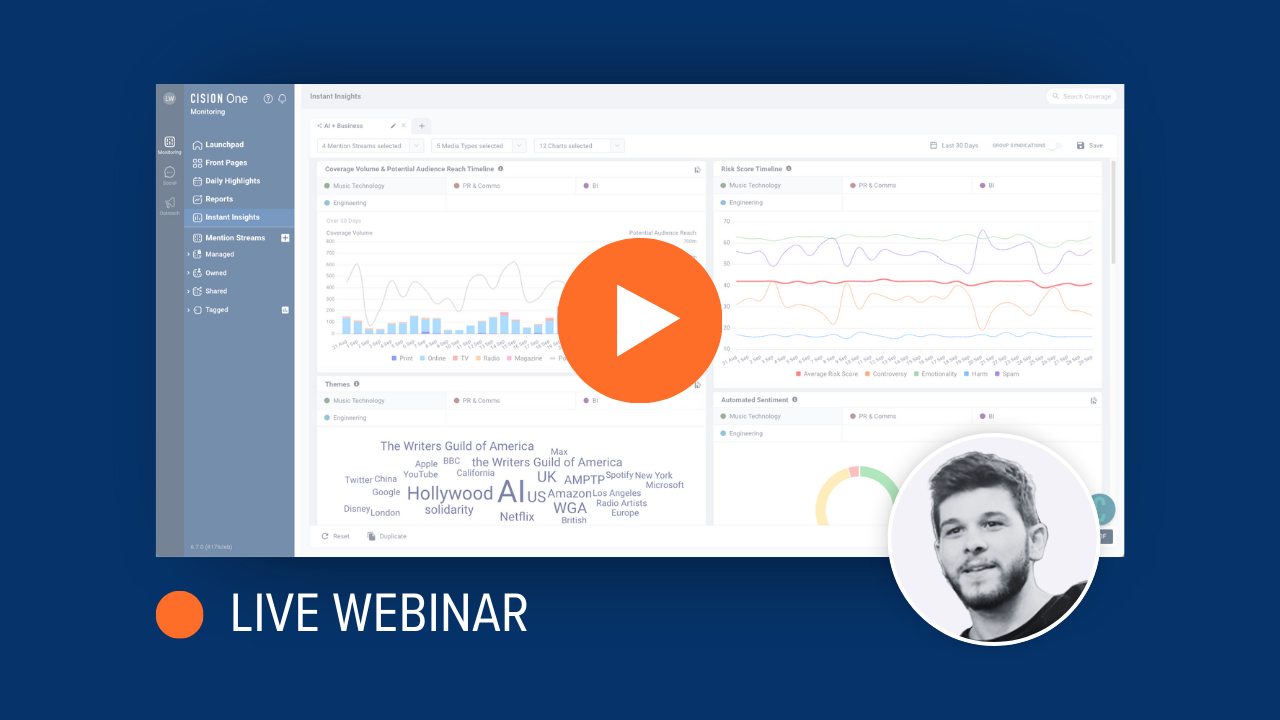
[On-Demand Webinar] The Next Generation of Media Intelligence: From Gorkana to CisionOne
Explore CisionOne, a revolutionary media intelligence platform, and the evolution of Gorkana. Learn key features and strategies from Luke Williams, CisionOne Product Marketing Manager. Elevate your media outreach to new heights!


